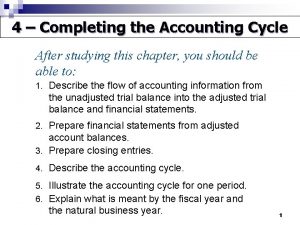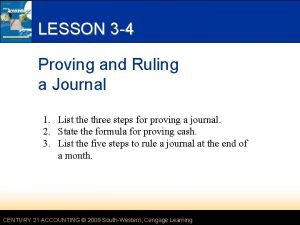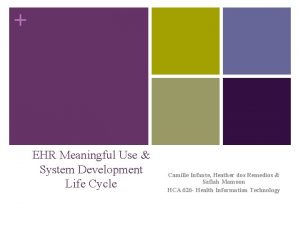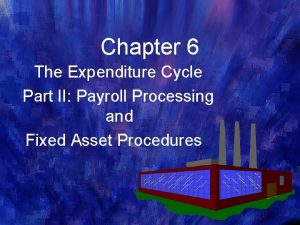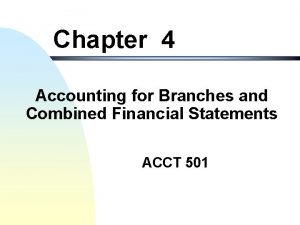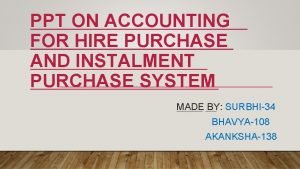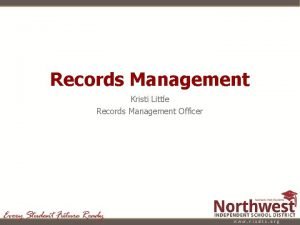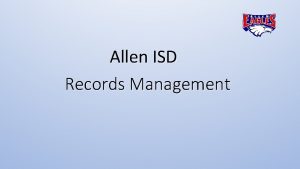ACCOUNTING RECORDS JOURNAL Steps in the Accounting Cycle









- Slides: 9

ACCOUNTING RECORDS JOURNAL

Steps in the Accounting Cycle 1. Collect and analyze info 7. Close the accounts 2. Journalize transactions 6. Record and post adjusting entries 5. Prepare financial statements 3. Post transactions to general ledger 4. Prepare work sheet LO 6

Journalize transactions • Journal: mean a day book or daily record. the transactions are first recorded in chronological order (as and when they take place). • It is a book of prime, original or first entry. • Journal is helpful in the preparation of accounts in the ledger

Format of Journal • The process of recording transactions in journal is termed as “Journalizing”. • The General Journal [ Journal ] identifies which accounts are going to be debited and which accounts are going to be credited and creates a complete record of this information.

Source documents • Business need to have a proof of transactions that occur. • Every business transaction is initially recorded on a Source document • A S. D is a point of original entry of a transaction & should provide the information necessary to record the transaction accurately.

There are 3 rules for recording the transactions • Personal Accounts • Debit • Credit The Receiver The Giver • Real Accounts • Debit • Credit What comes in What goes out • Nominal Accounts • Debit • Credit Expenses and losses Income and gains

POINTS TO BE NOTED WHILE PASSING JOURNAL ENTRIES • The various accounts are classified into 5 categories: • 1) Assets Account • 2) Liabilities Accounts • 3) Capital Accounts • 4) Expenses and losses Accounts • 5) Income and Gains Accounts

COMPOUND ENTRY • When ever two or more transactions of the same nature (i. e. transactions where either the account to be debited or the account to be credited is common) take place on the same date a composite or compound or combined journal entry may be passed for them instead of passing separate journal entry for cash of them.

Illustration • Let us Journalize the transactions:
 Universal accounting equation
Universal accounting equation 5 steps of accounting cycle
5 steps of accounting cycle 5 steps of accounting cycle
5 steps of accounting cycle State the formula for proving cash.
State the formula for proving cash. System development life cycle of electronic health records
System development life cycle of electronic health records Accounting records that provide the audit trail for payroll
Accounting records that provide the audit trail for payroll Incomplete records accounting
Incomplete records accounting Home office and branch accounting
Home office and branch accounting What is spoilage in accounting
What is spoilage in accounting Installment purchase accounting entries
Installment purchase accounting entries


